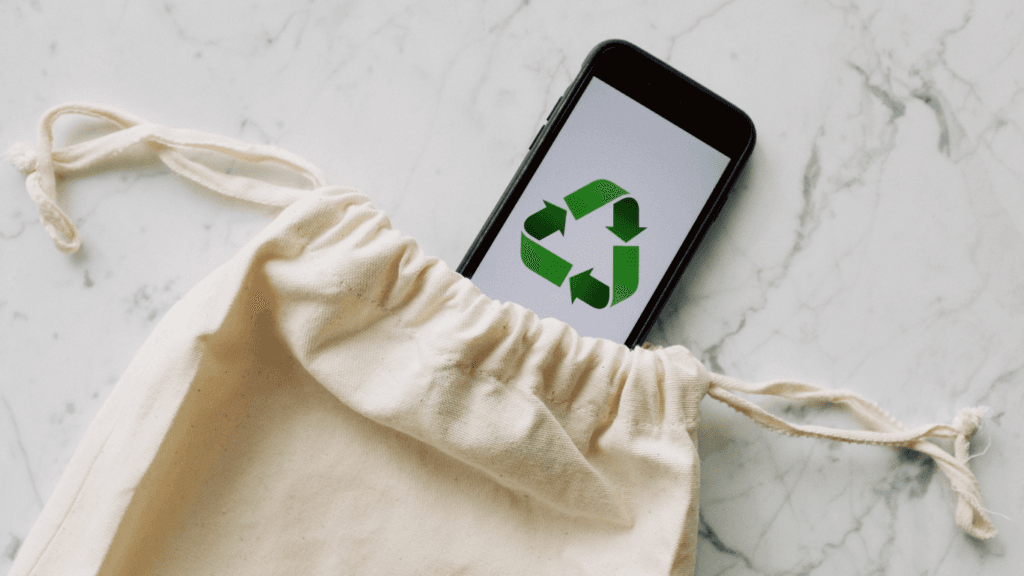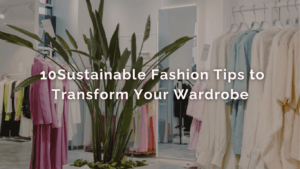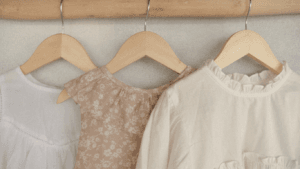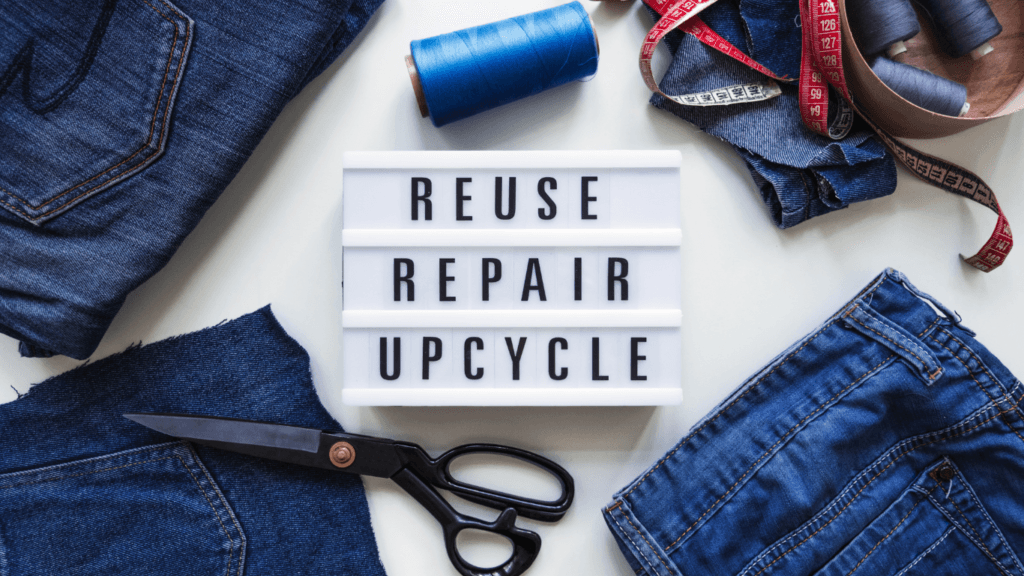
By sumitchakravarti/ 4 December, 2024
How to avoid fast fashion?
Fast fashion is all around the young—affordable prices for trendy clothing. But have you ever wondered what these low price tags actually cost? Fast fashion refers to cheap and mass-produced clothing designed to be made very quickly and sold for profit, without concern for its sustainability and ethics. Unfortunately, environmental and social impacts are extended to contribute to pollution, waste, and exploitation.
Going for a more sustainable wardrobe and lifestyle will tell anyone to avoid fast fashion since it’s a great idea if change must happen. This guide therefore breaks down step-by-step actions one needs to follow toward the transition into a more sustainable wardrobe and lifestyle.
Understanding social effects of fast fashion
What Is Fast Fashion?
Fast fashion is about producing clothes quickly to conform to the current trends and selling them at a price working for most people. Such brands as Zara, H&M, and Shein are known to create collections at a horrendous speed: They often trade quality for price, sustainability, and ethics.
Essay on Fashion or Fast fashion: the production of clothing to keep in step with the latest trends and sell at an affordable price. Zara, H&M, and Shein are the brands that are known for pouring in collections at an alarming speed, often letting quality, sustainability, and ethics fall by the wayside.
Characteristics of Fast Fashion:
Short production cycles.
High volume and low-cost pricing.
Cheap materials that degrade quickly.
“But what exactly is fast fashion? It is basically a model designed for consumers to have constant buying and throwing away, and it has led to the pile-up of burgeoning waste.”
Social impacts include:
Child labor and forced labor.
Hazardous working environments.
Lack of fair wages and benefits.
By choosing to avoid fast fashion, you’re taking a stand against these injustices.
Environmental Consequences of Fast Fashion
Today, the fast fashion industry is one of the world’s most polluting industries, stretching its ecological footprint from intensive resource-utilization manufacturing to wastefulness disposal methods.
Characteristics of Fast Fashion:
Water pollution and waste:
The water pollution resulting from dyeing textiles is glaringly high. Factories discharge untreated wastewater directly into rivers and oceans and ruin ecosystems.
Textile waste:
Each year, billions of garments end up in landfills, taking decades to decompose.
Carbon Emissions:
The production and transportation of fast fashion items result in high carbon footprints.
8 Actionable steps to go sustainable
This might not be the easiest thing to do, but I think the first step to diverting yourself from fast fashion would be to change your mindset into thinking about quality rather than quantity. To invest in high-quality clothing pieces may cost you some initial money but ultimately it’ll save you lots more in the long term. Fabrics of good quality, like organic cotton, wool, and linen, are even more durable environments. While fast-fashion commodities quickly fade after a few wears, these will stretch it out long enough to warrant savings instead.
When you go out to buy clothes, look for well-made, detailed articles of clothing. Go beyond looking at the fabric and consider the stitching and zippers. Usually, high quality items come with reinforced stitching, double-stitched seams, as well as quality fabrics that could withstand regular use and washing. Hence, reduces majorly your fashion footprint by not having to replace these continually.
Related story
2. Shop Second-Hand and Vintage Clothing

Alternatives to fast fashion would include second-hand buying or vintage clothing. Everybody deserves a second chance, and when these clothes find their way back home into the closets of today’s wearers, they make their environmental impact even less by just reducing the demand for new products. Most thrift stores, online resale platforms like Poshmark and vintage shops offer treasures that only need a little care and possibly a seam or two, quite often at minuscule price differences from new.
Well, aside from these possibilities for wearing new clothes, it also decreases the environmental impact linked with producing new clothing because it supports a circular economy. It could make part of that amazing dark waste generated by the fashion industry less so, as by selecting second-hand items, you have helped your wear habits contribute toward that great goal of reducing waste and support most often one-of-a-kind fashion that comes with a story behind it.
3. Embrace Slow Fashion and Timeless Styles
Fast fashion takes from one trend to another every several months or so which renders the purchase of clothes obsolete sooner than later. But slow fashion is beyond this. It considers timeless designs and styles that never get stale. Investing into classic versatile pieces allows a person to build a wardrobe that can last for years with less inclination to update its contents.
While working on your sustainable wardrobe, think of styling your clothing in several ways. Neutral colors like black, white, navy, and gray together with simple cuts ensure that your wardrobe is stylish throughout the year against the trend of passing fads. A few of having the vital key pieces like a tailored blazer, a classic pair of jeans, and a versatile dress form a foundation for a sustainable wardrobe without an overdose of consumption.
4. Support Ethical and Sustainable Brands

Make sure to buy from ethical and sustainable brands when needing new clothes. These companies take into consideration their environmental impact and ensure that their labor practices are fair and materials used are sustainable. Research brands that have an emphasis on transparency and are committed to reducing wastage and pollution. Almost all brands now offer clothing options that are created from recycled or organic materials, not to mention they champion ethical working conditions in their supply chains.
It is advisable to look for Fair Trade, GOTS (Global Organic Textile Standard), and B Corp while shopping for clothes. These certifications will ensure that the brand adheres to ethics and sustainability not only in its production but also in its business operation.
Related story
5. Practice Conscious Consumerism
Mindful shopping will greatly minimize your efforts in fast fashion. Ask yourself if you need the item before paying for it. Remember all costs: the purchase price and every other lifetime cost of buying new clothes: environmental impact, labor practices, and investment of currency in buying clothes for new items. Thoughtfully choosing clothing would help eliminate impromptu buying habits that contribute to the overconsumption cycle.
Conscious consumption requires keeping a shopping list and adhering to it. Take time to measure a particular piece of clothing against personal style and sustainability goals. Depending on whether it can be worn during different seasons or matched with other items already owned, it determines the clothing item’s value. This method really helps prevent the impulse for most of the extra purchases and only brings what is absolutely necessary.
6. Repair and Upcycle Clothes

Reclaim instead of tossing out “fine” clothes. Add creativity and turn out to be something new from an old outfit. From converting jeans into shorts or adding patches to your old jacket, you will have money saved while giving your apparel that personalized touch.
There are several online tutorials as well as workshops concerning basic repairs such as sewing a button or mending a tear, but you could always go to a local tailor for fixing or altering garments-something that adds years to your outfits.
Not very trendy anymore: old t-shirts make good rags, bags, or home decor items. These are small acts in keeping clothing from being thrown away and filched into landfills.
Related story
7. Rent or Swap Clothes for Special Occasions
For special occasions, lend or swap garments instead of shelling out for a new outfit. Many websites and apps – to name a few, Rent the Runway and HURR Collective — make it convenient to borrow these garments at only a fraction of the price compared to buying them outright. This option is particularly handy for those very special events like weddings, parties, and seasonal occasions.
Trade with friends or family for a sustainable way out. Get everyone into a clothing swap, and then exchange clothes that have been gently used for some wardrobe refreshment without buying anything new. This generally encourages involvement at a community level around these types of things in fashion, while still creating the mentality of sharing rather than consumerism.
8. Educate Yourself and Others About Sustainable Fashion
Educating is thus the key to innovating. The better you know how fast fashion has affected anything, how better can your choice-making be with awareness of the alternatives? Subscribe to these blogs, view such documentaries, follow on social media any eco-consciousness-promoting fashion. Work closely with sustainable brands and support initiatives working towards responsibility in the fashion world.
It’s contagious, too; make someone else catch it. Share tips and information about the sustainable fashion movement with family and friends so that they can become conscious consumers. A massive significant collective shift towards the adoption of sustainable fashion practices can drastically reduce the industry’s impact on the environment.
Conclusion
In this context, avoid fast fashion and switch to a more sustainable wardrobe. It helps the earth as much as your own self-style and finances. Conscious choices from quality over quantity, second-hand shops to supporting ethical brands, and mindful consumption can significantly lessen the environmental impact that clothing habits have on an individual. Small actions can make big differences, like repairing clothes, renting special outfits, or educating others about sustainable fashion. This attitude is critical in maintaining a responsible, eco-friendly lifestyle that would have a long-lasting impact on the environment and the fashion industry.
FAQs
How do we stop fast fashion?
- Buy second hand
- Buy with local shops.
- Invest in classic items.
- Modify your routine.
- Seek out eco-friendly materials.
- Modify your routine.
How to avoid fast fashion on a budget?
To be free from fast fashion even on a budget, buy secondhand clothes, organize swapping clothes with friends, invest in quality timeless pieces, and learn to upcycle or repair old clothes. Sift for sustainable brands during sales or discounts.
How to avoid fast fashion on a budget?
To be free from fast fashion even on a budget, buy secondhand clothes, organize swapping clothes with friends, invest in quality timeless pieces, and learn to upcycle or repair old clothes. Sift for sustainable brands during sales or discounts.




